The Raymond area was originally called Fairview. The area two miles west of where Hathaway High School is currently located was first settled in September 1883 by Joseph Bertrand (he relinquished in July 1887, Thomas Langley followed).
The original homesteaders that followed include:
January 1884
-Gilbert N. Brown (homestead and tree claim)
-Charles H. Babcock (homestead and tree claim; relinquished tree claim in April 1885; Charles F. Taylor and Willard M. Taylor Sr. followed)
-Mathew E. Stamey (prospector from Champaign, Illinois; also bought most of Pine Island land)
February 1884
-Frank E. Patridge
-Henry Brown
April 1884
-James, Joseph, and Ms. Jennie Bucklin (quarter-section each)
-Benjamin F. Sargent
-John Brownlee (homestead; relinquished in November 85; followed by Lindley M. Davis)
-William A. Wickett
-Seldon W. Moore (homestead; relinquished in May 1887; Charles J. Eaton)
July 1884
-William M. Williams (homestead and tree claim; relinquished in April 1885; Henry Brown followed)
March 1885
-William D. Howard (homestead; relinquished in November 1885; followed by James W. Ritter)
[Editor's note: For a book that one of these homesteaders likely used, have a look at The American Settler's Guide: A Popular Exposition of the Public Land System by Henry N. Copp (1884); just Google-- american settler guide land tenure]
 Gilbert Brown and his family were the first to settle in the Raymond area. He homesteaded a half-section of public lands that included a tree claim on the prairies north of Jennings on January 31, 1884. His brother, Henry Brown, would settle next to him shortly after. In August 5, 1885, Gilbert also purchased a neighboring property. He and his family had come from Albion, Iowa, which was directly north of Jennings (on nearly the same longitude), just northwest of Cedar Rapids, Iowa. He had moved to Albion from Winfield, Illinois, shortly after the Civil War. In the Civil War, he served in 52nd Illinois Infantry that fought battles along the southern Tennessee border and into Georgia, where his regiment was eventually deployed in General Sherman's March to the Sea.
Gilbert Brown and his family were the first to settle in the Raymond area. He homesteaded a half-section of public lands that included a tree claim on the prairies north of Jennings on January 31, 1884. His brother, Henry Brown, would settle next to him shortly after. In August 5, 1885, Gilbert also purchased a neighboring property. He and his family had come from Albion, Iowa, which was directly north of Jennings (on nearly the same longitude), just northwest of Cedar Rapids, Iowa. He had moved to Albion from Winfield, Illinois, shortly after the Civil War. In the Civil War, he served in 52nd Illinois Infantry that fought battles along the southern Tennessee border and into Georgia, where his regiment was eventually deployed in General Sherman's March to the Sea.
In the 1870 Census, he is listed as living in his hometown next to his parents, Simpson and Phebe Brown, in Winfield, Illinois, just west of Chicago. Gilbert was born in 1842. His father was born in 1806 in New York. It is safe to say that Simpson migrated west on the Erie Canal. The canal opened in 1825, and would become a major commercial and migration route from New York through the Great Lakes to Chicago. Given the timing and Simpson's New York origin, it is more likely that he migrated on the Erie Canal rather than the nearly rough National Road, built in 1803, traversing the Cumberland Gap from Maryland into Central Illinois, several hundred miles south of Chicago.
Farmers near Chicago were successful because of the Erie Canal's access to New York. Then, in 1848, the Illinois & Michigan Canal opened, giving access to the Mississippi River. This would essentially open a trade route from New York to New Orleans, moving the commercial hub from St. Louis, which had only North-South capabilities, to Chicago, with East-West capabilities and now North-South. After his return from Civil War duty, Gilbert's father sold his holdings in the Chicago-area, and moved directly west to Albion, Iowa. He was joined by Gilbert and his younger brother, Monroe. By 1870, Simpson and Gilbert had each amassed $5,000 in real property holdings, but Simpson was retired and lived off his tenancies. Presumably, Monroe was his tenant. Simpson died in 1878. Seven years after their father died, Gilbert and Monroe moved to the prairies of Louisiana, presumably at the encouragement of Southern Pacific Railroad immigration recruiters. Seven years after moving south, Gilbert homesteaded a neighboring section (patent below) to bring his land total to 250 acres.
Gilbert Brown was the clear leader in the early-Raymond community. Given his rise to sergeant in his Civil War duty, he was clearly a natural leader. With no church or school building in the community and plenty of children, he organized and held the first Sunday school in his house.
In 1888, several years after arriving from Iowa, he would lead the community to build a school house on his property on what is now Ardoin Road, about a mile south of Highway 102 off Dama Landry road (just west of the Raymond Cemetary). The school was built by the Jimmie Ritter family, the Sam Davis family, Harry Bryan, Maurice Bryan and family, and Gilbert Brown’s brother, Monroe and family, who petitioned Imperial Calcasieu Parish for funds to maintain the school.
As the community grew, Gilbert Brown petitioned for a stop on the postal route between Jennings and China in 1892. When it was discovered that the name Fairview was taken, Gilbert chose the name Raymond, who was the newborn child of his brother, Monroe Brown. For six years, the school house also served the post office and as a chapel on Sunday. It should be noted that the school kept the Fairview name until it became part of the Jeff Davis Parish school system.
Then in 1894, he led the drive in building the original church building for Raymond Methodist Church. At the turn of the 20th Century, Sunday afternoons were a time for baseball. The yard in front of the Methodist church and later a field across the road from church served as the field.
Raymond School
 When Jeff Davis Parish was formed in 1913, the school board purchased land about a half-mile south of Highway 102 on Dama Landry Road at Brown Road from Gilbert Brown after a $1,000 bond passed to build a new school. The children attending Raymond were the sons and daughters of Gilbert Brown, H. Precht, J. Koll, J. Bryan, M. Bryan, T. Hebert, and A.E. Stagg and were taught by Monte Hall and Linnie Hosea.
When Jeff Davis Parish was formed in 1913, the school board purchased land about a half-mile south of Highway 102 on Dama Landry Road at Brown Road from Gilbert Brown after a $1,000 bond passed to build a new school. The children attending Raymond were the sons and daughters of Gilbert Brown, H. Precht, J. Koll, J. Bryan, M. Bryan, T. Hebert, and A.E. Stagg and were taught by Monte Hall and Linnie Hosea.
In 1914, when a one-room school house was built at Hathaway, the students at Raymond in the 5th Grade and above were sent to Hathaway amid protests against consolidation. The Raymond school would stay open so young children did not have to make their way across the Grand Marais to and from Hathaway. After the modern brick Hathaway High School was opened, Raymond was consolidated and the school house would later be used to educate black children in the area for a time. The property purchased from the Brown family was eventually returned to them after the school closed.
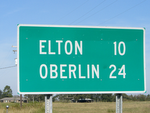
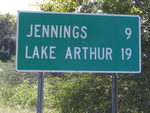
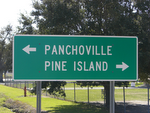
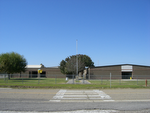
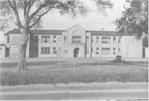



1 comment:
I'm reading this with tears in my eyes because Raymond, son of Henry, was my grandfather. I've been told some of the family history, but this finally confirms and deepens my understanding of my family's past. My father, James Leslie Brown, was born in Waterloo, Iowa. He told me that Raymond had moved there to attend business school. Raymond eventually became a carpenter. I would love to hear from anyone who has more information to share. I'm especially eager to find out about Annette Adele Le Suer, Henry's wife. Thank you. marbrown@cybermesa.com
Post a Comment